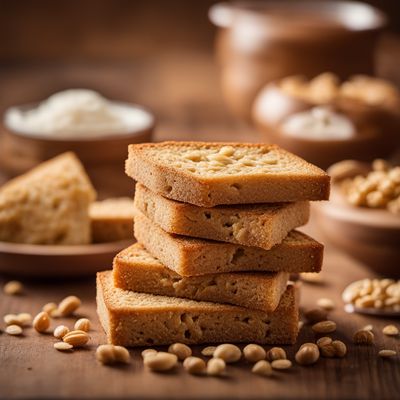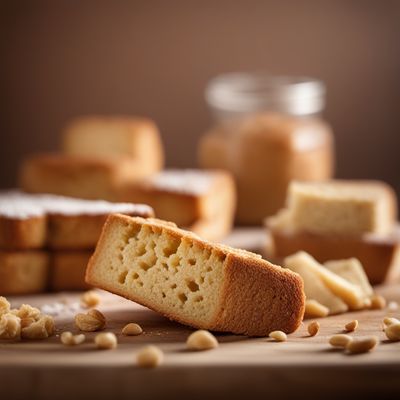
Ingredient
Rusk
"The Crunchy Delight: Unveiling the Secrets of Rusk"
Rusk is a type of bread that undergoes a double baking process, resulting in a dry and crispy texture. It is typically made from white bread, which is sliced and baked until it becomes golden brown and completely dry. The end product is a crunchy and brittle bread that can be enjoyed on its own or used as an ingredient in different recipes. Rusk is known for its ability to absorb flavors and liquids, making it a popular choice for soaking in milk, tea, or other liquids to create delicious desserts or savory dishes. Its dry and firm texture also makes it an ideal base for spreads, toppings, or dips.
Origins and history
Rusk has a rich history that dates back centuries. It is believed to have originated in Ancient Rome, where it was known as "paximadi." The Romans baked bread twice to preserve it during long journeys and military campaigns. Over time, this preservation technique spread to different cultures and regions, including Europe, the Middle East, and Asia. In India, rusk is commonly known as "toast" and is a popular tea-time snack. In many cultures, rusk is associated with celebrations and religious festivals, where it is often used in traditional recipes and offerings.
Nutritional information
Rusk is a good source of carbohydrates and provides energy. It also contains small amounts of protein, dietary fiber, and essential minerals like iron and calcium. However, it is important to note that rusk is typically high in calories and may contain added sugars or fats depending on the recipe or brand.
Allergens
Rusk may contain allergens such as wheat, gluten, and dairy, depending on the recipe or brand. Individuals with allergies or intolerances to these ingredients should check the label or opt for gluten-free or allergen-free varieties.
How to select
When selecting rusk, look for a product that is evenly baked, golden brown in color, and free from any signs of moisture or mold. It should have a crisp texture and a pleasant aroma. Avoid rusk that appears overly dry or has a stale smell.
Storage recommendations
To maintain the freshness and crispness of rusk, store it in an airtight container or resealable bag in a cool, dry place. Avoid exposing it to moisture or humidity, as it can cause the rusk to become soft or lose its crunchiness.
How to produce
Amateur bakers can produce rusk by slicing bread into thin slices, arranging them on a baking sheet, and baking them in a low-temperature oven until they become dry and crispy. The slices can be seasoned with herbs, spices, or sugar before baking for added flavor.
Preparation tips
Rusk can be enjoyed as a standalone snack or used in various recipes. To enhance its flavor, you can spread butter, jam, or cheese on top. It can also be crushed and used as a breadcrumb substitute in recipes like meatballs or as a crunchy topping for salads and desserts. When using rusk in recipes that require soaking, such as trifle or bread pudding, ensure that it is soaked for the appropriate amount of time to achieve the desired texture.
Culinary uses
Rusk is commonly used in recipes like bread pudding, trifle, tiramisu, and as a base for canapés or bruschetta. It can also be crushed and used as a coating for fried or baked dishes, providing a crispy texture.
Availability
Rusk is commonly available in grocery stores, supermarkets, and bakeries worldwide.

